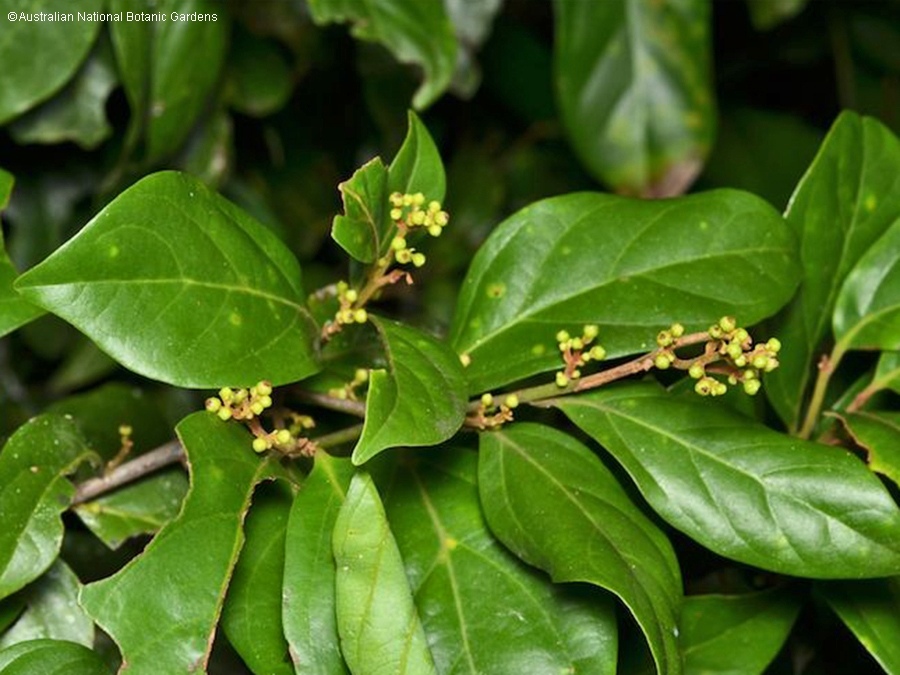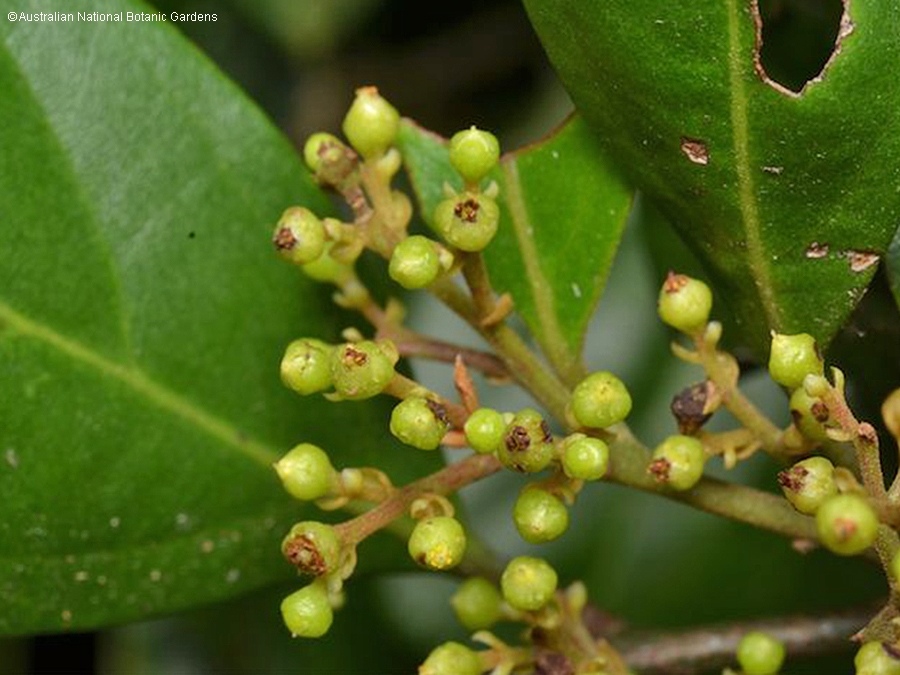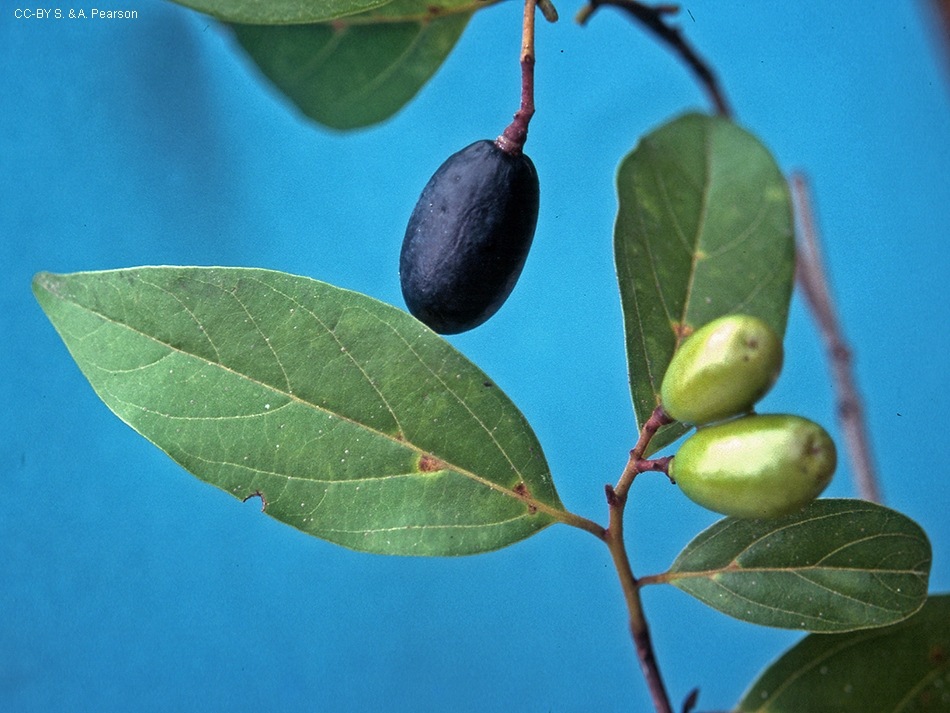Australian Tropical Rainforest Plants - Online edition
Endiandra muelleri subsp. bracteata B.Hyland




Leaves alternate, simple. Stipules absent. Petioles 0.4-1.4 cm long. Leaf blade elliptic, ovate, or obovate, sometimes narrowly so, 5-12 cm long, 2.-5 cm wide, base cuneate, truncate or rounded, margins entire, apex acute, acuminate or obtuse. Domatia often present, visible under magnification as more or less hooded pits or tufts of hairs at axil of lateral veins and midrib. Leaf undersurface usually with straight and tortuous, appressed and erect, pale brown hairs. Midrib depressed on upper surface. Oil dots ± visible with a hand lens.
Inflorescence paniculate, axillary. Flowers bisexual, 3-merous. Perianth tube 1-1.7 mm long, outer tepals larger (0.7-1 mm long) than inner tepals (0.6-0.9 mm long), scarcely opening, forming a cylinder around anthers and ovary, cream, green or yellowish green. Stamens three; staminal glands six, free from one another. Staminodes three, usually differentiated or undifferentiated into a head and stalk. Ovary superior.
Inflorescence paniculate, axillary. Flowers bisexual, 3-merous. Perianth tube 1-1.7 mm long, outer tepals larger (0.7-1 mm long) than inner tepals (0.6-0.9 mm long), scarcely opening, forming a cylinder around anthers and ovary, cream, green or yellowish green. Stamens three; staminal glands six, free from one another. Staminodes three, usually differentiated or undifferentiated into a head and stalk. Ovary superior.
First leaves elliptic, about 30-50 long, 20-34 mm wide, green on the underside. At the tenth leaf stage: leaves with some hairs on the upper surface at least along the midrib and main lateral veins; oil dots small, numerous, visible with a lens; terminal bud, petiole and stem with rusty brown hairs present.
Occurs in CEQ, and in south eastern Queensland to near Ballina in New South Wales. Occurs in rainforests 150-800 m.
Distinguished form Endiandra muelleri subsp. muelleri by the twig hairs, straight and tortuous, appressed and erect in E. subsp. bracteata compared with straight and appressed in E. subsp. muelleri. This profile information and associated coding has been adapted from Cooper & Cooper (2004), Hyland (1989), Le Cussan & Hyland (2007) and Harden et al. (2014).





